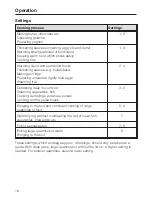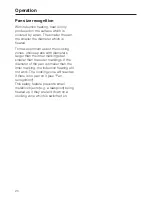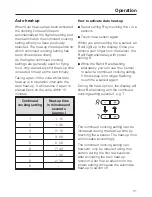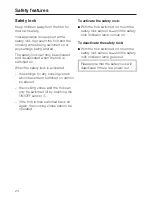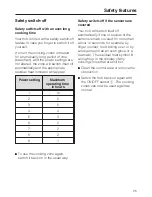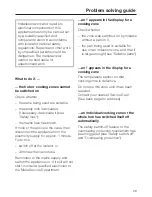
The induction principle
An induction coil is located under each
cooking zone. When a zone is switched
on, this coil creates a magnetic field,
which creates or induces current in the
base of the pan on it (which must be
magnetic). This heats up the base of
the pan. The cooking zone itself is
heated up indirectly by the heat given
off by the pan.
The following points should be noted
when cooking by induction:
– Pans:
An induction cooking zone will only
react to pans with a magnetic base
(see "Suitable pans"). Unsuitable
pans will not heat up.
– Pan recognition:
If an unsuitable pan is placed on the
cooking zone, the induction heat will
not work.
– Pan size recognition:
Induction cooking zones adapt their
power output automatically to the
diameter of the pan base.
Detailed information on these points
can be found in the next section.
Noises
When using an induction hob, the
following noises can occur in the pan,
depending on what it is made of and
how it has been constructed.
– On the higher power settings, it
might buzz. This will decrease or
cease altogether when the power
setting is reduced.
– If the pan base is made of layers of
different materials (e.g. in a
sandwiched base), it might emit a
cracking sound.
– Whistling might occur if linked zones
(see "Booster function") are being
used on the highest setting at the
same time, and the pans also have
bases made of layers of different
materials.
– You might hear a clicking sound from
the electronic switches, especially on
lower settings.
The appliance has a cooling fan to help
extend the life of the electronics. When
the hob is being used intensively, this
will come on and you will hear a
whirring sound. The fan may continue
to run after the appliance has been
switched off.
Operation
15
Содержание KM 499
Страница 34: ...34 ...
Страница 35: ...35 ...
Страница 36: ...Alteration rights reserved 4304 M Nr 06 042 070 02 en GB ...


















